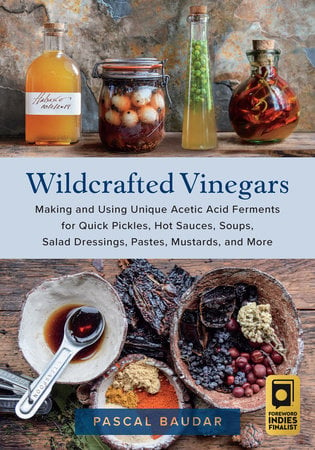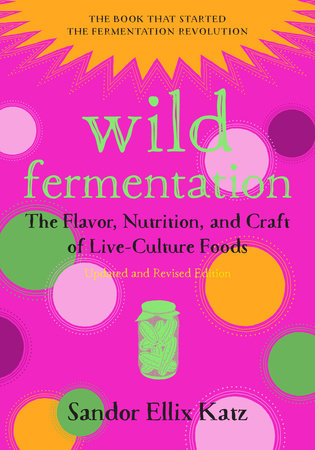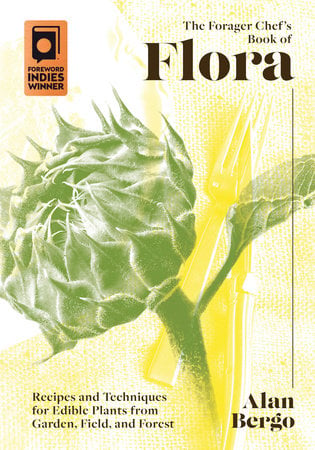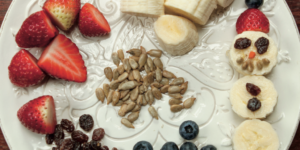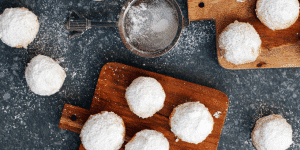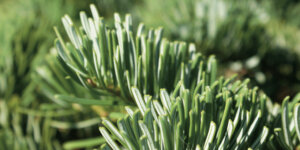The Promising Persimmon: How to Make Persimmon Vinegar
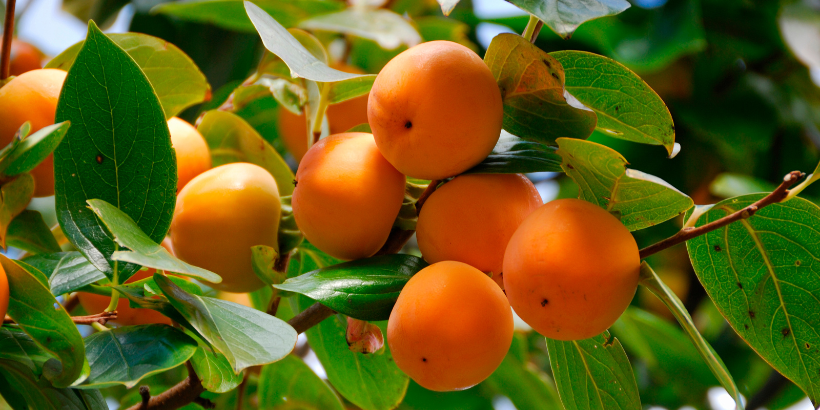
This bright, yet delicate flavor profile is both sweet and sour – a unique taste that you’ll keep coming back to. This recipe is intended for long, slow fermentation starting at persimmon harvest time in the autumn and continuing into winter.
For those of us not fortunate enough to be able to collect wild fruit, then a visit to the local grocery store will be fine. Widely available from autumn through to winter and for making vinegar, the variety is not particularly important, only that they are ripe.
Read on to learn how to create persimmon vinegar on your own and use the pulp as a pickling medium.
The following is an excerpt from Sandor Katz’s Fermentation Journeys by Sandor Ellix Katz. It has been adapted for the web.
The Promising Persimmon
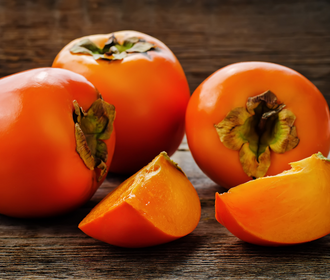
Each tree’s persimmons are distinctive, and I have a few special favorite trees, though all the fruit is delicious. You learn to spot the signs that they are fully ripe; unripe fruits are horribly astringent. You can make this vinegar with American persimmons or any of the more widely available Asian varieties.
I learned about this wonderful and simple method for making persimmon vinegar from my one-time student and Australian tour organizer Sharon Flynn, who includes it in her beautiful book, Ferment for Good. Sharon says she first knew of it from Korea, then saw a recipe in Nancy Singleton Hachisu’s amazing book, Preserving the Japanese Way.
Beyond the pleasing sweet-sour persimmoniness of this vinegar, one of the most appealing rewards is that the persimmon pulp by-product can then be used as a pickling bed (Persimmon Pickling Medium).
The only ingredient for this vinegar is persimmons. Any kind of persimmons. Nancy Singleton Hachisu recommends using them while they are still firm, or “baseball hard.” She uses a mix of Fuyu (the ones that are sweet even when the fruits are firm) and Hachiya (the ones that are tannic until they get soft). If you use indigenous North American persimmons, try to use fully ripe fruit, but don’t worry if you get some underripe ones.
The fermentation should break down the tannins. This recipe is intended for long, slow fermentation starting at persimmon harvest time in the autumn and continuing into winter.
Making Persimmon Vinegar
Time Frame:
About 3 months, in a cool environment
Equipment:
- Ceramic crock, bowl, or another nonreactive vessel
- Cloth to cover vessel, and string or rubber band to secure it
- Strainer and muslin or other finely woven cloth to line it
- Sealable narrow-neck bottle(s) for bottling
Ingredients (for roughly 2 cups/ 500 milliliters):
- 2 pounds/1 kilogram of fruit
Process:
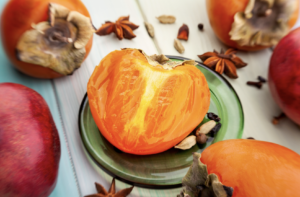
Place the persimmons in a vessel big enough that you can stir the persimmons from the bottom.
Cover the vessel with a cloth and secure with string or rubber band to keep flies out of the persimmons.
Ferment for a few days. “Set the crock in a sunny spot and let nature take its course,” advises Nancy.
Look them over after a few days. If molds started to develop on any of the skins, trim them away. Stir the persimmons around a little. They should be getting softer and starting to get juicy.
Stir them every day or two as they get juicier and juicier. The juice will get bubbly as it ferments. Taste the juice and enjoy experiencing its transformation from sweet to alcoholic.
Once the bubbling subsides and it starts to taste a little vinegary, leave it be for a few months, covered with the cloth to allow it to breath while protecting it from flies.
Taste the evolving vinegar every week or two. A mother may or may not develop on the surface. Don’t worry either way.
You can enjoy persimmon vinegar young, as a light drinking vinegar, or ferment it for 2 or 3 months for higher acidity. Definitely harvest before hot weather arrives.
When you are ready to harvest the vinegar, strain it through a fine strainer lined with muslin or other finely woven cloth. Let the persimmon mash drain on its own for a few hours, then fold the corners of the cloth into the center and use a moderate weight, such as a bowl or pot (potentially with some other weight inside it), to press further liquid from the pulp. After this pressing, gather the remaining pulp into a ball in the cloth and squeeze with your hands to extract as much juice as you can.
Store the vinegar in full, well-sealed bottles.
Use the pulp as a pickling medium, as described in the following recipe, Persimmon Pickling Medium.
Persimmon Vinegar: Pickling Medium
One of the most exciting aspects of making persimmon vinegar is using the by-product as a pickling medium to carry the pulpy-seedy residue, still rich with persimmon flavor, into acidic pickled vegetables. As we explore in later chapters, by-products of one fermentation process are often used as the starting point for another. Japanese pickles, collectively known as tsukemono, are made in an unusually wide array of styles and make use of incredibly diverse mediums—many of them fermentation by-products—such as sake lees (see “Kasuzuke”) or these persimmon pickles.
Timeframe:
A few days
Vessel:
Small crock, wide-mouth jar, or other nonreactive container with a capacity of at least 1 quart/1 liter.
Ingredients (for 1/2 pound/250 grams):
- About 1/2 pound/250 grams vegetables, such as daikon, other radish, turnip, carrot, or cucumber, or experiment with others
- 1 or 2 tablespoons coarse salt
- Roughly 1 pound/500 grams residual pulp from Persimmon Vinegar
Process:
Dry root vegetables in the sun for several days before submerging them in the pickling medium. This makes them pliable, lowers their water content so they do not water down the pickling bed, and allows the vegetables to absorb more of the persimmon flavor.
Chop the vegetables into chunks big enough to find and retrieve easily.
If you are using cucumbers, salt the chunks and leave them in a colander to drain for a couple of hours before burying in the persimmon mash. Then rinse and dry.
Rub the edges of the other vegetable chunks with coarse salt before submerging them (to scratch the surface and facilitate faster transfer of flavors and nutrients).
Bury the vegetable chunks in the persimmon mash so that they are not touching one another and all the surfaces are touching the mash.
Ferment the vegetables in the mash for 2 or 3 days, then remove them, along with the persimmon mash that sticks to them. Slice and serve.
You can reuse this bed once or possibly twice, but by then the flavor will wane and it will become excessively sour.
Recommended Reads
The Vibrance of Vinegar: Methods to Make Vinegar From Scratch
Recent Articles
These snacks might be too darn cute to take a bite of! Brighten up snack time this winter using fruits and veggies we all know and love.
Read MoreThe scent of fir trees is a holiday staple 🎄 Imagine sipping a festive cocktail infused with the unmistakable taste of fir ✨ This holiday season, elevate your entertaining game by introducing fir to your menu – from classy cocktails to rustic potatoes!
Read MoreLooking for a way to use that leftover Thanksgiving Turkey? Shake things up this holiday season with a game-changing twist. Serve these easy-to-make appetizers with a side of Vietnamese dipping sauce for an extra kick of flavor!
Read More


